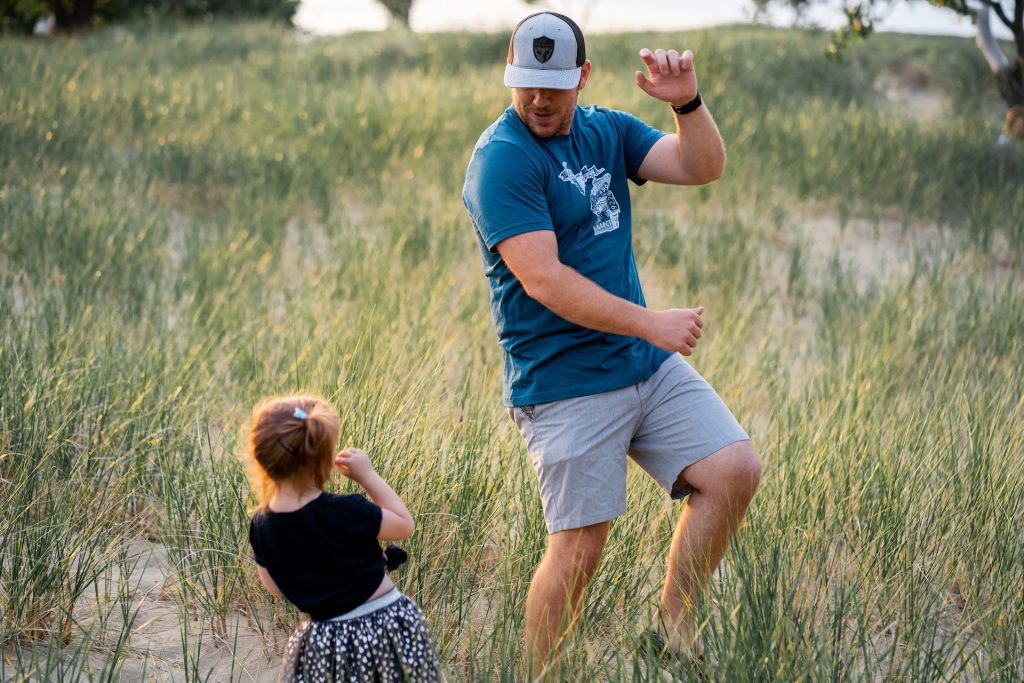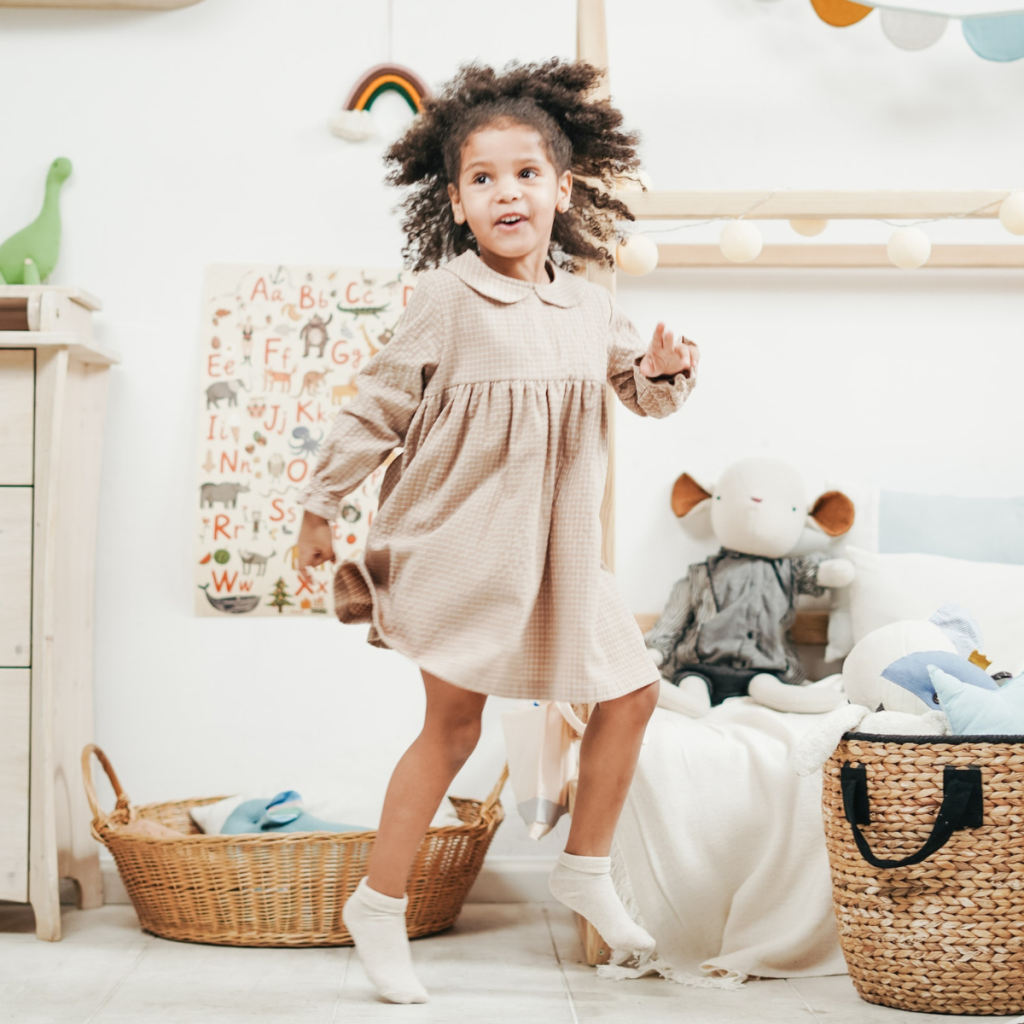Discover the ultimate step-by-step guide to teaching dancing to 5-6 year old children.
Teaching Dancing to 5-6 Year Old Children: A Step-by-Step Guide
Teaching dance to young children can be an incredibly rewarding experience. Not only does it allow them to express their creativity and develop physical coordination, but it also helps them build confidence and social skills. In this step-by-step guide, we will explore the basics of teaching dance to children aged 5-6. So grab your dancing shoes, put on some upbeat music, and let’s dive right in!
Understanding the Basics of Teaching Dance to Children

The Importance of Dance for Young Children
Before we start teaching dance moves, it’s essential to understand the significance of dance for young children. Dance allows them to explore their bodies, express emotions, and develop a sense of rhythm. It also promotes physical fitness, improves posture, and enhances cognitive abilities. Dance is a powerful tool that can help children develop self-confidence, creativity, and discipline. Through dance, children can learn to communicate non-verbally, collaborate with others, and appreciate different cultures and art forms. So, let’s get those little feet moving and explore the wonderful world of dance!
When children engage in dance, they are not only learning the steps and movements but also developing important life skills. Dance encourages self-expression and emotional release, allowing children to express their feelings in a safe and creative way. It helps them build a strong connection between their mind and body, improving their coordination, balance, and spatial awareness. Moreover, dance provides an outlet for children to channel their energy positively, reducing stress and promoting overall well-being.
Key Principles in Teaching Dance to Kids
When it comes to teaching dance to children, there are a few key principles to keep in mind. First and foremost, make it fun! Children learn best when they are enjoying themselves. Incorporate games, imaginative play, and storytelling into your dance lessons to keep the children engaged and excited. Use music that resonates with them and encourages them to move and groove.
Secondly, be patient and encouraging. Remember that each child progresses at their own pace. Some may grasp the steps quickly, while others may need more time and practice. Provide positive reinforcement and praise their efforts, no matter how small. Encourage them to embrace their unique style and celebrate their achievements, fostering a sense of accomplishment and self-esteem.
Finally, create a positive and inclusive environment where every child feels comfortable expressing themselves. Emphasize the importance of teamwork, respect, and support among the dancers. Encourage them to cheer for each other, collaborate on group routines, and appreciate each other’s individuality. By fostering a sense of belonging and acceptance, you are creating a space where children can freely express themselves and grow as dancers and individuals.
Before starting the dance lessons, it’s crucial to warm up the children’s bodies to prevent injuries and prepare them for physical activity. Incorporate stretching exercises, simple cardio movements, and coordination exercises into the warm-up routine. This will help increase their flexibility, improve their cardiovascular endurance, and enhance their overall dance performance.
As you teach dance moves to children, break down the steps into smaller, manageable parts. Demonstrate each step clearly and encourage the children to imitate your movements. Use simple and age-appropriate language to explain the steps, ensuring that they understand the instructions. Provide visual aids, such as pictures or diagrams, to help them visualize the movements and understand the choreography.
Throughout the dance lessons, encourage creativity and improvisation. Allow the children to add their own flair to the choreography and express themselves through movement. This will not only boost their confidence but also foster their artistic abilities and encourage them to think outside the box.
Remember, teaching dance to children is not just about teaching them the steps; it’s about inspiring them, nurturing their love for dance, and helping them discover their own unique style. By following these key principles and incorporating a variety of teaching techniques, you can create a positive and enriching dance experience for children that will stay with them for a lifetime.
Preparing Your Dance Lessons
When it comes to preparing your dance lessons, there are a few key factors to consider. One of the most important aspects is choosing the right music for young dancers. Music forms the backbone of any dance class, setting the tone and creating an atmosphere that encourages movement and expression.
Choosing the Right Music for Young Dancers
When selecting music for young dancers, it’s essential to opt for lively and upbeat tunes that will get them excited to move. The rhythm and tempo of the music can greatly influence the energy and enthusiasm of the dancers. Incorporating a variety of genres can also be beneficial, as it exposes them to different rhythms and styles.
Additionally, consider including some familiar children’s songs in your playlist. These songs can make the young dancers feel more comfortable and confident as they dance to tunes they are already familiar with. It’s a great way to create a sense of familiarity and enjoyment in the dance class.
Remember, the goal is to create a dance party atmosphere that encourages the young dancers to let loose and have fun. So, choose music that will make them want to move their bodies and groove to the beat!
Creating a Safe and Fun Dance Environment
Before the dance floor fills with tiny dancers, it’s crucial to create a safe and fun environment for them to dance in. Safety should always be a top priority, as young dancers may be more prone to accidents and injuries.
Start by clearing any obstacles from the dance space, such as furniture or other items that could become potential hazards. This will ensure that the dancers have enough room to move freely without the risk of tripping or colliding with objects.
Investing in non-slip flooring or using dance mats can also help prevent slips and falls. These safety measures provide dancers with a stable and secure surface to dance on, reducing the risk of accidents caused by slippery floors.
Furthermore, make sure that your dance space is well-lit and properly ventilated. Good lighting is essential for dancers to see their movements clearly and avoid any potential mishaps. Adequate ventilation is also crucial to keep the dancers comfortable and prevent overheating during energetic dance sessions.
By creating a safe and fun dance environment, you are setting the stage for an enjoyable and enriching experience for young dancers. Remember, safety always comes first, but that doesn’t mean you can’t have a blast while dancing to the rhythm!
Step-by-Step Guide to Teaching Dance Moves

Warm-Up Exercises for Young Dancers
Start each dance class with a series of warm-up exercises to prepare those little bodies for movement. Simple stretches, jumping jacks, or marching in place are great ways to get their muscles warmed up and their hearts pumping. A warm-up also helps create a routine and sets the tone for the rest of the class. Let’s limber up!
During the warm-up, it’s important to emphasize the importance of proper technique and body alignment. Encourage the young dancers to stretch their arms and legs, reaching for the sky and touching their toes. Remind them to keep their backs straight and their core engaged. These warm-up exercises not only help prevent injuries, but they also promote flexibility and improve overall dance performance.
Additionally, incorporating fun and creative warm-up activities can make the class more enjoyable for the young dancers. You can play upbeat music and have them dance freely, encouraging them to express themselves through movement. This not only helps them loosen up their muscles but also allows them to tap into their creativity and imagination.
Introducing Basic Dance Steps
Now comes the exciting part – teaching the basics of dance steps! Start with simple movements like clapping, stomping, and jumping. Gradually introduce basic dance steps like twirls, kicks, and hops. Break down each move into easy-to-follow instructions and demonstrate them yourself. Remember, repetition is key to mastery. Soon, those little dancers will be grooving like professionals!
When introducing basic dance steps, it’s crucial to focus on proper technique and alignment. Teach the young dancers to maintain a strong posture, with their shoulders back and their heads held high. Emphasize the importance of pointing their toes and using their arms gracefully to enhance their movements. By instilling these fundamental principles from the beginning, you are setting a solid foundation for their future dance endeavors.
In addition to teaching the steps, encourage the young dancers to explore their own creativity within the given movements. Allow them to add their personal flair and style to the dance steps, fostering their individuality and self-expression. This not only makes the learning process more enjoyable but also helps them develop their own unique dance identity.
Progressing to More Complex Moves
As your young dancers grow more confident, it’s time to introduce more complex dance moves. Incorporate combinations of steps and encourage them to experiment with their own variations. Don’t forget to celebrate their progress and acknowledge their efforts. A little applause can go a long way in boosting their self-esteem. Let’s take it to the next level!
When progressing to more complex moves, it’s important to challenge the young dancers while still providing a supportive and nurturing environment. Introduce them to different dance styles such as ballet, jazz, or hip-hop, allowing them to explore various techniques and movements. This exposure to different styles broadens their dance vocabulary and helps them become well-rounded dancers.
Furthermore, encourage the young dancers to collaborate with their peers and work on group choreography. This not only promotes teamwork and cooperation but also allows them to learn from each other and develop their social skills. Watching their progress as they master more complex moves and perform them with confidence is truly rewarding for both the dancers and the instructor.
Engaging Children in Dance
Making Dance Lessons Fun and Interactive
To keep children engaged, it’s essential to make dance lessons fun and interactive. Use props like scarves or ribbons to add a touch of magic and encourage imagination. Incorporate storytelling elements into dance routines to capture their attention. Remember, the more interactive and creative the lessons, the more excited your little dancers will be!
Encouraging Creativity in Dance
Dance is all about self-expression, so encourage your young dancers to unleash their creativity. Give them opportunities to add their own moves to choreography or encourage them to create their own dance routines. Providing a space for their ideas to flourish will not only foster their creativity but also make them feel empowered. Let’s dance to their own beat!
Dealing with Challenges in Teaching Dance
Addressing Common Difficulties in Teaching Dance to Children
Teaching dance to children can come with its fair share of challenges. Some children may struggle with coordination while others might be shy or lack confidence. It’s crucial to address these difficulties with empathy and patience. Break down steps into manageable chunks and provide positive reinforcement to boost their spirits. Remember, every child’s journey is unique!
Strategies for Keeping Young Dancers Motivated
Motivation is key to keeping young dancers engaged and enthusiastic about dance. Offer praise and recognition for their efforts, no matter how small. Mix up the routines to prevent boredom and keep their interest alive. Consider organizing occasional performances or showcases to give them a platform to showcase their skills. A motivated dancer is a happy dancer!
Teaching dancing to 5-6 year old children is an exciting adventure filled with laughter, energy, and tiny twinkle-toed wonders. Remember to be flexible, have fun, and cherish every moment of their dance journey. So, put on your dancing shoes, embrace the rhythm, and dance your way into their hearts!



